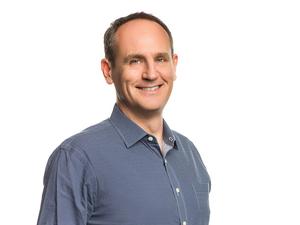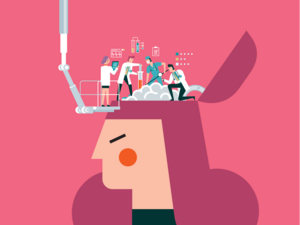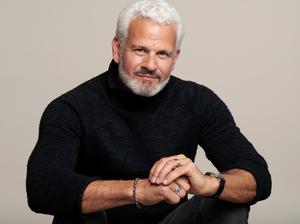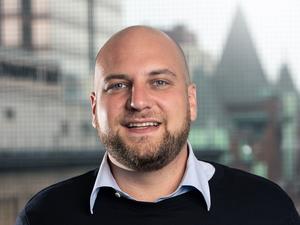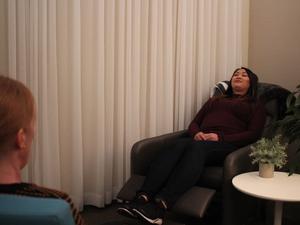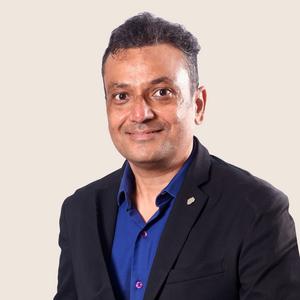More than a half century after the Summer of Love, the Bay Area is once again a center for a new psychedelic movement. But this one is characterized more by rigorous scientific research and regulatory approvals than free love and jam bands.
Propping up the movement are vocal supporters ranging from tech magnate Peter Thiel to author Michael Pollan to boxer Mike Tyson — and a wave of entrepreneurs riding the swell.
A growing base of clinical research is validating the use of psychedelic drugs to treat a range of mental disorders, including depression, anxiety and PTSD, conditions that are short on treatment methods.
At the same time, authorities at all levels are reconsidering the half-century approach to psychedelics as a law enforcement problem best dealt with by prosecution and imprisonment of users and dealers alike.
According to Data Bridge Market Research, the market for psychedelic drugs is projected to reach $6.9 billion by 2027. Three psychedelic companies have gone public in the U.S. over the last 12 months and new psychedelic research centers have launched at institutions like UC Berkeley and UC San Francisco.
These scientific, financial, political and cultural factors are converging to kick psychedelics into the mainstream.
‘Mind manifesting’
Many of the drugs that are now seeing renewed interest in their effects on the human brain have been used by indigenous communities for thousands of years as part of traditional healing or spiritual practices.
The term psychedelic itself is derived from Greek roots meaning “mind manifesting” in reference to the way the drugs can unearth and reveal elements of the subconscious. The term entheogen is also used to describe psychoactive substances including MDMA (ecstasy), LSD (acid), ketamine, psilocybin (magic mushrooms) and mescaline that induce changes in behavior, mood or states of consciousness for the purpose of a spiritual or transcendent experience.
After chemist Albert Hoffman discovered the hallucinogenic effects of LSD in 1943, hundreds of papers were published in the 1950s and 1960s that explored the potential therapeutic effects of psychedelics on substance abuse, depression, anxiety, PTSD and other conditions.
That largely came to a halt when the federal government started to crack down on psychedelics due to their association with the growing counterculture movement, eventually leading to the passage of the Controlled Substances Act and the launch of the War on Drugs.
Nearly all common psychedelics such as LSD, mescaline and psilocybin – as well as cannabis – were categorized by the federal government as Schedule I drugs, the most stringent level of regulation for what the government alleged was a high potential for abuse and a lack of medical utility.
Decades of prohibition followed, withering existing lines of scientific inquiry and pushing activities under the table.
But a sea change is underway.
Last year, Oregon voters approved a ballot measure decriminalizing psilocybin and legalizing it for therapeutic use. Individual municipalities have also started to roll back restrictions, including Denver, Oakland and Santa Cruz, which have all decriminalized psilocybin.
In May, state Sen. Scott Wiener, D-San Francisco, introduced SB 519 to decriminalize a number of psychedelics across the state of California. The law would allow those over 21 to use, cultivate or share limited amounts of DMT, ibogaine, LSD, mescaline, MDMA and psilocybin (ketamine was removed by lawmakers over fears it could be used as a date-rape drug).
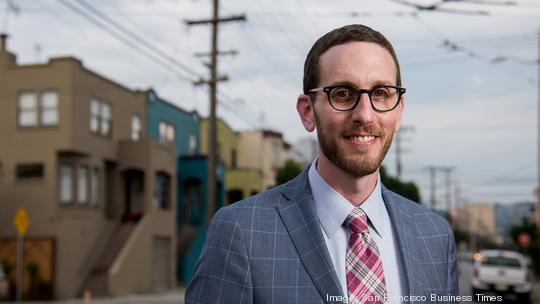
Wiener told me he was first exposed to the therapeutic effect of psychedelics a decade ago by a former colleague with a son addicted to heroin, who found that an ibogaine-based therapy program got him sober after more traditional interventions failed.
SB 519 is part of a larger effort to rethink the existing zero-tolerance approach to drug enforcement and criminal justice, he said. The bill, which passed out of the Senate with a one-vote majority, is currently moving through the committee process in the state Assembly.
“The war on drugs is still ongoing. It’s not over. But the public increasingly understands that it has been an abject failure and a total waste of money. It’s not had any benefits, but it’s torn apart communities,” Wiener said, putting the ultimate likelihood of SB 519’s passage at “50-50.” “Step one is let’s stop arresting people for possessing these drugs.”
In the clinic
Like many doctors active in the space, Dr. Jennifer Guo’s professional interest in psychedelics was sparked by seeing first-hand the transformative effects that the drugs could have on patients.
During her medical education at Yale University, she met one patient during a clinical rotation who had severe lifelong issues with depression that often veered into suicidality. The day after he received an infusion of ketamine as a part of a study, she saw a changed man in the emergency room.

“He told me, ‘I have never known what it was like to not feel depressed. And this is it,’” said Guo, the director of psychedelic medicine at San Francisco-based Mindful Health Solutions, which operates a number of clinics that offer ketamine-assisted therapies among other mental health treatments.
That experience shifted what she wanted to do as a clinician and brought her out to San Francisco where she worked to give ketamine to veterans at the VA who had experienced complex trauma and PTSD.
Although ketamine isn’t considered a classic psychedelic, it is typically grouped together with drugs like psilocybin and LSD because of its ability to produce hallucinogenic effects. Typically prescribed as an anesthetic, the drug has been used off-label for decades as a treatment for a range of mental health conditions, including depression, substance abuse, OCD, anxiety disorders and PTSD.
“Ketamine is the leading edge for the psychedelic space. These clinics are gaining popularity and more and more people are starting to talk about ketamine for depression, anxiety, obviously the need for alternatives to medications like Xanax,” said Greg Rovner, the CEO of Burlingame-based Heally, which provides telemedicine services to alternative medical clinics.
In 2019, the Food and Drug Administration approved a version of ketamine known as esketamine with an oral antidepressant for use against treatment-resistant depression. Last year, regulators added an additional indication for the short-term treatment of suicidal ideation.
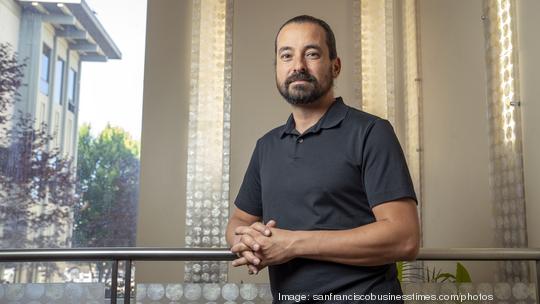
“As the FDA goes and approves more treatments and more clinical trials are done, I think the stigma is going to go away and more and more providers are going to be willing to look at these alternative treatments,” Rovner said. “It’s just a question of time.”
While best practices are still debated, most psychedelic-assisted psychotherapies include a few key steps.
First is consultation with the doctor to talk about potential risk factors, how to prepare mentally and physically and the goals of the treatment. Then the drug is administered, which in Guo’s case is done in a recliner chair in a low light and a comfortable environment while blood pressure is monitored. That is followed by a period of integration where psychotherapy is used to help patients understand, interpret and find meaning in their psychedelic experience.
Guo said in rare cases she’s seen a single therapy induce nearly complete remission from patients’ depression or mental health issues. For most people, however, change typically comes over a series of sessions.
Dissociation — or a disconnection between a person’s thoughts, memories and identity — is often reported as an adverse effect of the use of ketamine. But Guo and her colleagues instead see it as a part of the path to healing for some patients.
“The idea is that you are not immediately caught up in your trauma and your anxiety and your ruminations. You’re able to separate a little bit from that, and then you’re able to see yourself with a different perspective,” Guo said.
She used the example of one patient who saw herself as a mountain climber struggling up the slope of life’s challenges before making it to the peak, where she was met with a goddess. That experience, according to Guo, helped become a lasting mental metaphor that the patient used to empower herself in her daily life.
“With the traditional psychotropic treatments, it is more of a medical model. We give you this thing and it’s going to fix you,” Guo said. “With psychedelics what I say is that we open the door for you. But you start to walk through it. It’s not just a treatment we impose on the patient, but they have to be really engaged in it.”
Guo jokes she “would have been laughed out of the room” if she suggested studying psychedelics while earning her doctorate in neuroscience. But that stigma is slowly fading, with established medical leaders like National Institutes of Health Director Francis Collins singling out psychedelics as promising drug candidates.
“We’re lucky to be in the Bay Area where there’s a lot more acceptance and openness about these kinds of treatments. But we’re still not there yet,” Guo said.
She’s doing her own part as a professor at UCSF in designing curriculum that makes sure that knowledge of psychedelics are being shared with the next generation of doctors.
A difference of opinion
Most psychedelics stimulate receptors for serotonin, a neurotransmitter that impacts mood. Research has also shown that they have the effect of triggering increased neuroplasticity – the ability of the brain to adapt or change itself by forming new neural networks.
From here the theories move away from physiology and toward philosophy. One is predicated on individuals having an “inner healing intelligence.” Just as you don’t need to tell your finger to heal when you get a paper cut, the idea goes, your brain has a natural and innate ability to evolve toward healing and wholeness in response to mental illness.
Research conducted over the past decade has shown strong positive treatment effects from psychedelics in areas ranging from depression to anxiety to substance abuse to PTSD.
The results of a double-blind randomized controlled study led by Robin Carhart-Harris at Imperial College London published in April in the New England Journal of Medicine found that psilocybin was at least as effective as a leading antidepressant and had a longer-term positive effect.
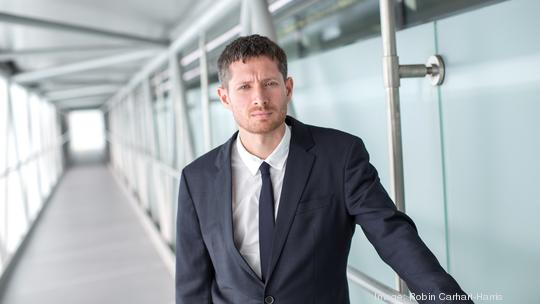
“Previous drug-assisted psychotherapy hasn’t been that great and you get side effects associated with the drugs,” said Carhart-Harris, who now serves as the director of the recently launched Neuroscape Psychedelic Division at the University of California, San Francisco. “With psychedelics I believe that we really have something that combines in a synergistic way is way more than either component on its own.”
Carhart-Harris posits that the hallucinogenic experience, which creates a profound, altered state of consciousness, is key to that transformation because it allows for a systemic reshaping of self-narratives.
In the research he has conducted, Carhart-Harris said a major “macrodose” of a psychedelic like psilocybin followed by intensive psychotherapeutic work has been the most effective method in treating mood disorders like depression.
“The biomedical model that has sort of dominated psychiatry in the past half century in my view is never going to be the solution for something as deep and complex as mental health,” Carhart-Harris said. “It’s a different thing to any sort of nonpsychoactive aspect like brain plasticity. It’s deeper. It’s more systemic. It’s about learning or relearning. It’s a shift in your outlook.”
David Olson, a biochemistry professor at UC Davis and the co-founder and chief innovation officer at Boston-based Delix Therapeutics, is taking a different approach that he argues could widely expand access to effective treatments for mental health.
Delix is developing what it calls nonhallucinogenic psychoplastogens, a class of drugs that would have the neuroplasticity boosting effects of psychedelics without the hallucinogenic trip.
“These neuroplasticity promoting small molecules actually fix the damaged circuitry,” Olson said. “And so the hope is that we would actually have a cure for the diseases with these molecules rather than just something that’s going to ameliorate these symptoms.”
The idea is that by removing what Olson calls the “subjective hallucinogenic experience,” the therapies developed by Delix could reach patients scared off by the prospects of having a bad trip or those who have comorbidities that make it dangerous for them to take traditional psychedelics.
“We want drugs that are so safe that you can put them in your medicine cabinet just like you would Tylenol or ibuprofen,” Olson said.
By removing the psychostimulant or hallucinogenic effects, the hope is to limit the potential for abuse, while also potentially bypassing the federal prohibition that has limited research into the space for so long.
He argues that existing treatment methods like those seen in ketamine clinics such as Mindful Health or those studied by researchers like Carhart-Harris consist of hours of clinical interaction limiting the types of patients who conceivably afford or access the treatments.
“If we can have a drug that does a lot of the rewiring of the brain without the subjective experience and without the need for cognitive behavioral therapy, you can hit an enormous fraction of the patients that need help,” Olson said.
Clashing culture
The recent rash of excitement and investment around clinical uses for psychedelics has largely sidelined people like Hector, a psychedelic mushroom cultivator and dealer in Oakland who requested we use only his first name.
To be sure, Hector has benefited from what he characterizes as the “urbanization” of the psychedelic world and particularly the interest from the Silicon Valley set. Of late, he’s taken to selling cute pink pills with Mario-like mushroom branding for those who have started microdosing, taking regular sub-hallucinogenic amounts of psychedelics to improve focus and cognition.
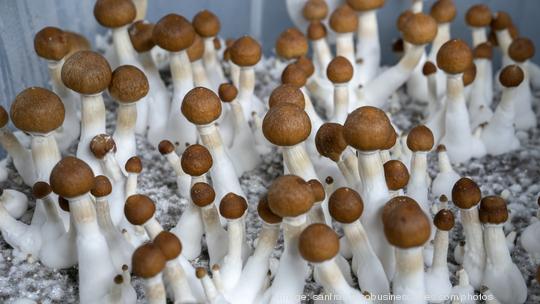
But his years spent working on the other side of the law has left him largely skeptical of the efforts to bring psychedelics into the mainstream.
“That’s exactly the business model that cannabis became,” he told me. “And that’s exactly what we don’t want to do because who’s going to benefit from that? The rich, white folks.”
Hector traced his relationship with psychedelics to childhood summers spent in the southern Mexican state of Oaxaca and his encounters with a legendary local healer named María Sabina who used psilocybin mushrooms as part of her ceremonial practice. He started cultivating his own mushrooms after a long spell of depression in college left him searching for a new path.
He sees part of his role as sharing his cultural heritage and said he’s developed a customer base of other Latino men who have used the drugs as part of their own healing journey.
As for whether he plans to go legitimate if efforts to legalize use of mushrooms continue forward? “I’m black market until the day I f-ing die,” he said with a grin.
Hector’s suspicions are in fact shared by those working on the legal side of psychedelics, who worry what will happen when biotech or Big Pharma get involved.
“Some of the tactics and approaches that are associated with a hard-nosed, sharp-elbowed capitalism is a real culture clash with the psychedelic medicine space because one of the deep realizations that be catalyzed through psychedelic medicine is the awareness of our interrelatedness and interconnectedness, which more sort of promotes a community mindedness,” Carhart-Harris said.
Compass Pathways, one of the leading companies active in the psychedelic space, has come under criticism from some activists for patenting its own form of synthesized psilocybin and its efforts to patent seemingly trivial but fundamental portions of a psilocybin-assisted treatment for depression, including using soft furniture and muted colors.
“Without IP, there would be little incentive to take the risk to fund the research and development of new products, given the large number of drug candidates that fail during the development process,” Compass says on its website.
While a known natural compound like psilocybin cannot be patented, it is possible to patent the process of producing a synthesized version used in medical treatments as well as how it is used in a clinical setting.
“I come back to the idea of abundance,” said Joshua White, the founder and executive director of Fireside Project, a San Francisco psychedelic peer support line. “I think there should be multiple options that people have for the safe consumption of psychedelics and then people should be empowered with the choice.”
A former deputy city attorney for San Francisco, White started having his own psychedelic experiences more than a decade ago, which opened his eyes to the healing ability of the drugs.
Fireside offers free, confidential emotional support by phone and text message to people during and after their psychedelic experiences. The nonprofit has recruited 45 volunteers from a range of backgrounds who are trained in active listening, psychedelic emergencies and psychedelic integration. Currently the service is offered five days a week but plans to expand to seven days a week in October.
“We see a parallel system where, yes, there are some people for whom consuming psychedelics in a clinic is the right solution for them,” White said. “But there are many other people for whom consuming psychedelics at home or with friends at a festival is the right answer. For all of those people we want to support them and meet them exactly where they are.”
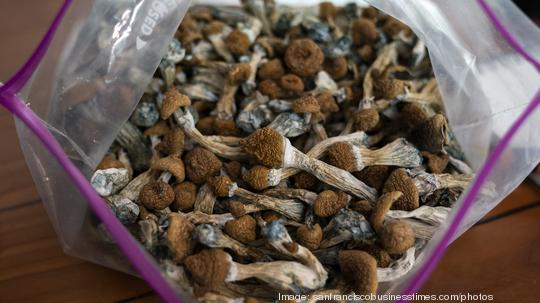
A lasting integration
Cannabis legalization may have been the gateway for the current movement to legalize psychedelics, but experts point out a number of key differences that will impact the vision for what a psychedelic future will look like.
Ismail Ali, the acting director of policy and advocacy for San Jose-based psychedelic research and educational nonprofit Multidisciplinary Association for Psychedelic Studies, traced a consistent arc for the legalization of cannabis that goes from activism to medical use to recreational adult use.
In psychedelics, however, medical use and decriminalization are moving on somewhat parallel tracks. Substances like MDMA and psilocybin have received breakthrough therapy classification from the FDA and are progressing through the typical drug approval process. At the same time municipalities are decriminalizing and legalizing less clinical uses of psychedelics.
“A lot of what we’re thinking through is how do we have access to different routes and how do they actually work in conjunction with one another?” Ali said. “There’s a lot of people who would benefit greatly from the use of psychedelics, who will never take it until a doctor can prescribe it to them, but there’s also a lot of people who would never go to a doctor to take a psychedelic. It’s not realistic to believe that either one of these systems is appropriate for all of society.”
Creating a legalized regulatory framework, Ali argues, would make it easier to root out bad actors by bringing what is already a vibrant community into the light.
As psychedelics continue their infusion into the popular consciousness, advocates hope for what is ultimately a transformative effect on society in much the same way the drugs can spark an individual’s path of healing and self-discovery.
“I suppose what’s really exciting about psychedelic medicine is it can really fundamentally disrupt the system,” Carhart-Harris said. “And that’s not just health care. That’s the system.”
The new age of psychedelics
Whether natural or synthesized, psychedelics have properties that experts say can be useful in treating a growing range of mental conditions.
- DMT (Dimethyl-tryptamine): A psychedelic drug that binds with the serotonin receptors in the brain and induces visual, auditory and tactile hallucinations. One commonly reported experience is perceived communication with an external super-intelligent entity or being. It is one of the main active ingredients in ayahuasca, a psychoactive brew that originated in South America as a ceremonial spiritual practice.
- Ibogaine: A naturally occurring psychoactive substance with dissociative properties that is found in the roots and bark of the iboga plant native to West Africa. The drug can induce psychedelic effects including hallucinations, but adverse effects include difficulty coordinating muscle movement. It is sometimes used as an alternative medicine to treat substance abuse disorder, particularly opioid addiction.
- Ketamine: Sometimes known as Special K, the drug in a medical context can be used as an anesthetic and induces a dissociative state that provides pain relief and sedation, alongside depressed breathing, stimulated heart function and increased blood pressure. Regularly used in veterinary medicine, ketamine functions by blocking glutamate receptors in the brain. In lower doses it has been used as an anti-depressant.
- LSD (Lysergic acid diethylamide): Commonly known as acid, it is a psychedelic drug that can lead to visual and auditory hallucinations when taken in high enough quantities. Dilated pupils, increased blood pressure, and increased body temperature are also typical effects. First synthesized by Swiss chemist Albert Hofmann in 1938, the chemical is derived from a molecule present in the fungi ergot.
- MDMA (3,4-Methylenedioxymethamphetamine): Commonly referred to as ecstasy or molly, MDMA is a psychoactive drug that induces euphoria, alternated sensations and increased empathy. First developed by Merck more than a century ago, MDMA is now typically used recreationally as a party drug and is associated with the rave scene. In 2017, MDMA-assisted psychotherapy was granted a “breakthrough therapy” designation” as a treatment for severe PTSD.
- Mescaline: A naturally occurring psychoactive substance that can be found in species of cactus including San Pedro, Peruvian torch and peyote. Used for thousands of years by Native Americans as part of religious practice, the drug leads to a psychedelic state that can include distorted time, altered thinking and visual hallucinations.
- Psilocybin and psilocyn: Active ingredients in magic mushrooms or shrooms are naturally found in various mushroom species. The molecules act on serotonin receptors, with effects that include euphoria, hallucinations, time distortion and perceived spiritual experiences. Psilocybin has been used by indigenous communities in spiritual and cultural practices for hundreds of years. The FDA has designated psilocybin as a “breakthrough therapy” for major depressive disorder and treatment-resistant depression.
